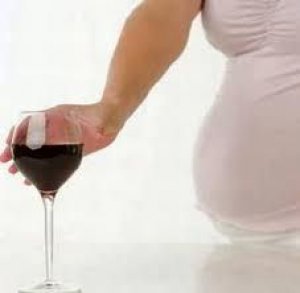
All iLive content is medically reviewed or fact checked to ensure as much factual accuracy as possible.
We have strict sourcing guidelines and only link to reputable media sites, academic research institutions and, whenever possible, medically peer reviewed studies. Note that the numbers in parentheses ([1], [2], etc.) are clickable links to these studies.
If you feel that any of our content is inaccurate, out-of-date, or otherwise questionable, please select it and press Ctrl + Enter.
Any amount of alcohol during pregnancy is harmful
Medical expert of the article
Last reviewed: 01.07.2025
 ">
">Scientists have conducted a study that has shown that there is no safe level of alcohol consumption during pregnancy. The results of the study were published in the journal Alcoholism: Clinical and Experimental Research.
Fetal alcohol syndrome is a syndrome characterized by delayed physical and mental development in children whose mothers consumed alcohol during pregnancy.
The effect of alcohol on the fetus
Severe fetal alcohol syndrome is characterized by the absence of a groove between the nose and upper lip, the presence of a thin, bright red border between the lip and the skin (thin upper lip), short palpebral slits, microcephaly, and failure to thrive.
Study author Feldman said the study was able to overcome two key problems in the study of fetal alcohol syndrome.
First, FAS studies often rely on mothers reporting alcohol consumption during pregnancy. Sourcing data is therefore questionable due to inaccuracies in the information provided, which leads to distortion of the results.
Feldman said they overcame the challenge of collecting accurate data on pregnancy status, amounts and types of alcohol consumed by using trained professionals who built trusting relationships with women and guaranteed confidentiality.
Another challenge in investigating fetal alcohol syndrome is identifying signs in newborns. This requires careful examination of specific physical features: "These alcohol-related features are often subtle and may be missed by the layperson, especially if the layperson is unaware of or does not know about the mother's alcohol use during pregnancy (prenatal alcohol exposure)," Feldman said.
To overcome this difficulty, the study involved an expert in dysmorphology who had completed appropriate training in the detection of physical abnormalities.
The study involved 992 women between 1978 and 2005. The researchers analyzed data on the form of alcohol consumption, timing, and dose of alcohol exposure during pregnancy.
Exposure times were assessed on a scale from zero to six weeks after conception, six to twelve weeks after conception, and during the first, second, and third trimesters.
The results of the study showed that:
- Early prenatal alcohol exposure was significantly associated with an increased risk of having a baby with low birth weight or microcephaly.
- The strongest association was in the second half of the first trimester. During this period of pregnancy, one alcoholic drink per day increased the risk of developing a smooth septum by 25%, a thin upper lip by 22%, microcephaly by 12%, low birth weight by 16%, and small fetus by 18%.
"Women should continue to abstain from alcohol from conception onwards and throughout pregnancy," the scientists add.
Feldman says they found no link between drinking alcohol during the first half of the first trimester and FAS. But he adds that it's not safe to drink alcohol during this stage of pregnancy, since the study only looked at live births and didn't include women who miscarried.


 [
[